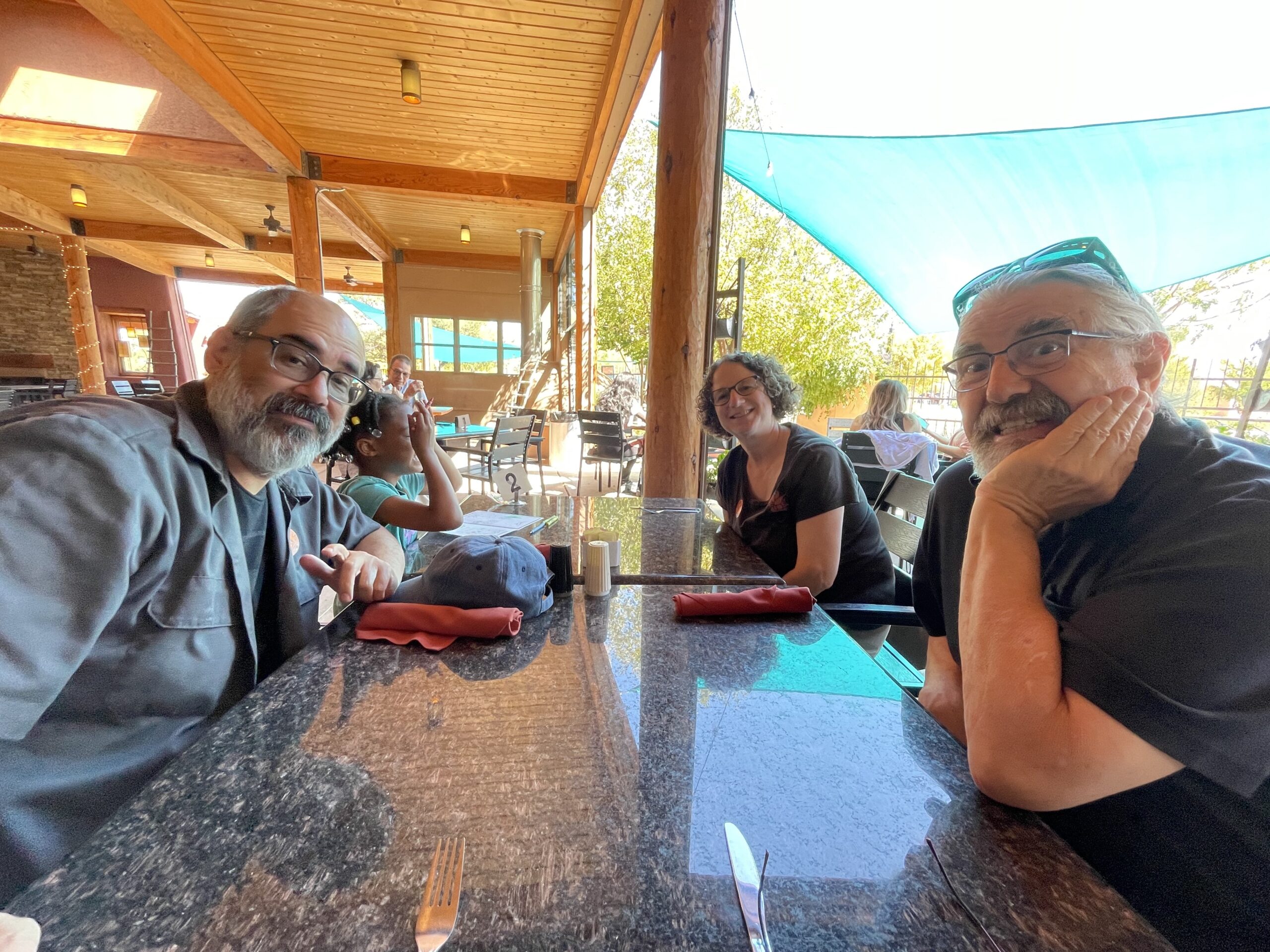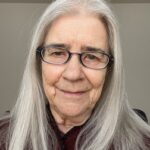My 81st Birthday lunch with my hubby, James, and my son, Matt, and his family, Julie and Mikayla. We were on the outdoor patio of the Indian Pueblo Kitchen in Albuquerque, NM. Earlier, we got to see the talented and lovely Native American Dancers, all girls ranging in age from 10 to mid-teens. Then we toured the beautiful Museum and finally made it to lunch at the restaurant. We were starved and hoped the food was good; we were not disappointed as the food was so fresh and tasty.
Now, for the not-so-nice Blog post:
Rageism!
You may wonder what I mean by “Rageism”…I am enraged about the way we older women are treated once those signs of aging become apparent, once we state an age older than 40 to others, etc.
The American Society on Aging is promoting today, October 7th, as Ageism Awareness Day, so I feel compelled to write about it. I noticed it is NOT being promoted like other “Awareness” days. It’s treated like it’s fine, OK, and normal in society to denigrate, make fun of, and ignore older women (and men, but not as viciously).
I, for one, have had enough and am on a mission to create a deeper awareness of ageism and spread the word about how to recognize and deal with it. So, here are some facts. I understand this is a long and negative subject, but we must know this to combat it.
What is the definition of Ageism? What follows is taken verbatim from the ASA’s Ageism Factsheet.
Ageism refers to stereotypes (how we think), prejudice (how we feel), and discrimination (how we act) toward others or oneself based on age.
There are many forms of ageism, including:
- Internalized ageism: How we feel about ourselves as aging people; and ageism in which older adults marginalize and discriminate against other older people.
- Cultural ageism: The everyday, invisible, profoundly ingrained, and normalized negative messages about aging and old people embedded in movies, TV, songs, jokes, etc.
- Implicit ageism: The unconscious bias that includes attitudes, feelings, and behaviors toward people of other age groups that operate without conscious awareness or intention.
- Benevolent ageism: Patronizing, paternalistic beliefs or behaviors that older people need to be protected and taken care of by younger people because they are no longer able to make decisions for themselves.
One example is Elderspeak. This is when an older adult is addressed as if they are much younger and can’t make decisions on their own—the voice may rise to a higher pitch, and simple words are used and spoken more slowly as if speaking to a child.
Ageism is one of the most widespread and socially accepted forms of prejudice.
Ageism and Age stereotypes are often internalized at a young age— long before they are even relevant. Even by the age of 3, children are familiar with age stereotypes, which are reinforced over their lifetimes.
How Ageism Harms Us
Ageism intersects and exacerbates all the other “isms,” including racism, sexism, and ableism. Multiple intersecting forms of bias compound disadvantage and worsen the effects of ageism on individuals’ health and well-being.
Ageism affects our health and longevity. Older individuals with more positive self-perceptions of aging live 7.5 years longer than those with a less positive self-perception of aging. Also, higher optimism has been associated with a more positive self-perception of aging, which can lead to positive health consequences.
Ageism harms our financial well-being. Older workers face longer periods of unemployment, discrimination during the hiring process, and fewer professional development opportunities.
Ageism harms our economy. AARP estimated $850 billion in lost gains to the Gross Domestic Product (GDP) as a result of involuntary retirement, underemployment, and unemployment among older workers. o Levy and colleagues (2020) estimated that in just one year, $63 billion in healthcare costs were due to ageism.
Where Ageism Shows Up
Ageism in American medicine and society is a matter of life and death, as dangerous as any incorrectly prescribed medicine or slipped scalpel. These negative stereotypes often result in less effective care, like denial of treatment options, underdiagnosis of depression, and mismanaged pain.”
Ageism in media remains pervasive. One study found that only 1.5% of characters on television in the United States were older people, and most of them had minor roles and were often portrayed for comic effect, drawing on stereotypes of physical, cognitive, and sexual ineffectiveness.
Ageism in marketing and advertising is just as bad. “Only an estimated 5% to 10% of marketing budgets are devoted to winning them [people older than 50] over. Only 5% of advertising images of people over 50 show them using technology, and even then, it’s usually a younger person teaching an older person how to use a device.”
Older influencers are wracking up big numbers on TikTok and other accounts—7.3 million followers for four gay men in their 70s, 14 million for a TikTok chef, and audiences view them as authentic and to be trusted.
Caregivers have started using social media to form peer support groups and normalize the caregiving experience using #dementia and #caregiving to build their communities.
At least 73% of people ages 50–64 use at least one social media site, and 45% of those older than age 65 do the same. However, older adult use of TikTok and Instagram still lags behind Facebook and YouTube. Only 26% of people ages 55 and older follow any virtual influencers.
Ageism in Healthcare (This one is so scary)
Older adults are not included in clinical trials and are less likely to receive preventive care.
There are 8,220 full-time practicing geriatricians in the United States, and there will be a 50% increase in demand for geriatricians between 2018 and 2030. About 30% of adults older than age 65 need a geriatrician.
The average salary for a geriatrician is $233,564, whereas anesthesiologists are paid twice that, and cardiologists and radiologists’ salaries top $500,000.
Geriatricians care for patients who require more time and resources than average Medicare beneficiaries, yet reimbursement is not correspondingly increased.
By 2025, the United States will need about 33,200 geriatricians to care for older patients, but currently, 50% of geriatricians practice full-time.
More than a third of 384 available slots for graduate fellowships in geriatrics— excluding geriatric psychiatry—went unfilled in 2019.
Less than 1% of grant funds go to causes related to age.
Now that I am thoroughly angry and somewhat depressed, I will stop with the doom and gloom. I wish it wasn’t so, but, as my elderly Mother used to say, “If wishes were horses, beggars would ride.”






